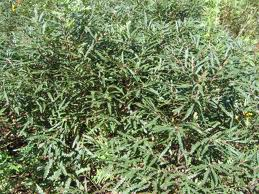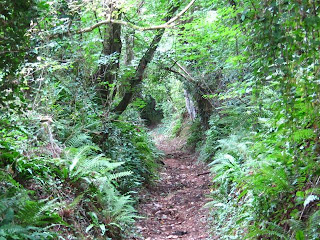One of the greatest joys of living where I do is that my farm straddles two very important ecosystems. The northern part of my farm is part of the great taiga, the forests that once circled the northern tundra of the whole earth. The southern part of my farm is still held in the remnants of the largest grassland on the planet, the American tallgrass prairie. The original peoples who lived here traded with each other but developed their own tribal way of life, customs and even languages that limited them to one or the other habitat. The HoChunk, members of the Siuoxian nations, living a more nomadic existence, following the great herds of bison that roamed the prairie. The Ojibwa were forest people, living in seasonal camps; maple camp in the spring, wild rice camp in the fall, winter and summer camps where the weather was suited.
My farm rests at this in between place, this hedge of two worlds, this threshold of nature. In parts it is ruled by the great forest trees, to walk there is to step into the mysterious darkness. The plants and animals adapt to this darkness in strange ways. The prairie is watched over by the blinding sun, there is nothing hidden here. To escape the heat it is said that 2/3 of the prairie lives underground. This way the great fires could sweep through and not kill everything, the roots of the plants and the animals that fed from them were insulated by the earth herself. The prairie is maintained by fire's cleansing--no fire, no prairie. The cold, darkness of the taiga, the hot, brightness of the prairie; two worlds coming together all around me.
What all these musings means is that I have to adjust my hunting and foraging technics to suit the habitat, but it also means that I have plenty of different resources to work with. Because it is still cool I have gone to the prairie, to walk in the in the big blue stem grasses with the badgers and the pheasants. In fact I flushed several small broods of pheasants just walking into the prairie, the young all feathered out and flying. The fox and coyote of the hills no longer have easy prey with the chicks, their young now have to learn to hunt in earnest or they won't survive the winter.

The most famous wild medicinal of the tallgrass prairie is, of course, Echinacea, or purple coneflower. The root, when used fresh is an amazing healer, boosting the immune system to help fight everything from the common cold, to infections, to the flu. My great grandmother gave it to her sons to chew on during the great flu pandemic of 1918 (though it didn't hit here until 1919). They never got the flu while millions were dying. The main fact that must be remembered about Echinacea is that it needs to be used fresh or in a very, very strong tincture. If you don't feel a tingle in your mouth when you use it, the medicine is gone.
I'm not gathering purple coneflower today though. I save that as one of the last roots that I gather for the season, just before winter freezes the ground too solid to dig without damaging the shovel.
Today I chose to gather three wild medicinals of the grasslands; blue false indigo, lousewort, and cup plant. All are plants that demand respect and if not given can make a person quite ill. In the modern world we often think that if a little of something is good then a lot of something must be GREAT!!! With medicines, whether they be natural or synthetic, this is a dangerous way of thinking.
Blue false indigo is also a wonderful immune stimulant, sometimes given along side or in place of Echinacea. While not as powerful, it's medicinal values last a bit longer than purple coneflower and the root can even be sliced thin and dried to be used in a decoction, which is the safest way to use it. I also will have people bite down on a piece of dried root if they have sore, infected gums or even a toothache. Made into a tea, cooled and sipped it can calm an upset stomach and even stop vomiting. Use only as much as is needed and there aren't problems.

Lousewort grows in many grassland habitats all over the world, going back through the Middle Ages and it was even written about by the Greeks. Long before garlic was used to ward off vampires, lousewort was planted in churchyard and gateways to protect the faithful from evil spirits that walk the land. It was grown in most healing gardens and can still be found growing around foundation of old buildings. It was even believed that wounded animals would search out lousewort to heal themselves.
Personally I like to stuff the aerial part of the lousewort into a clean jar and cover it with honey. I let it set in the window for eight weeks or so and then I have a sweet medicine that helps with sore throats, coughs, and even just a cold. In a few weeks, as the plant dies back, I'll harvest the root. This I mix with hawthorn berry to strengthen a weak heart or mix with cramp bark and vervain to ease the pain of sore muscles. I even add it to my ginger, wintergreen, and cayenne pepper massage oil to help ease those pains from the outside in.

Harvesting from the cup plant this time of year is a bit different than most plants. Instead of taking leaves, flowers or stems I am harvesting the sap itself. I break off a single leaf from the plant and collect the oozing, yellow sap. This I let dry until it gets chewy, sometimes even until it gets hard. Chewing in this sap not only can freshen the breath but swallowing the juices can help with "wet" coughs or coughs that seem to want to produce sputum. It doesn't actually stop the cough but it does help to break up congestion in the lungs so that the coughing can be productive. The HoChunk found it to be sacred and drank a concoction of the entire plant to purify themselves before large hunts. It should be used sparingly, no strong tinctures here or you may upset your stomach. It's also a fun plant to harvest from just to look down into the "cup" of the plant (where the leaves come together at the stem) to see who has stopped for a sip of water. I have found many a tree frog swimming contently in this hidden oasis.
By late morning my shoulder bag is full, the ground itself is warming fast, the flowers are buzzing with insects getting on with the business of pollinating. This time of year, with the prairie in full bloom, this is a magical place. With no trees, one can see for miles and at the same time can not see their own feet through the thick grass. I look to the tree line and the great forest that stretches north. Two world, so different and yet able to live within the shadow and sun of each other for millions of years now. Perhaps there is a lesson for the human that walks between them; all different, yet all one. Life is beautiful not because we are carbon copies of each other, but because we are so very diverse. When one ends, the other begins. We fill in all the spaces to create an amazing world.












